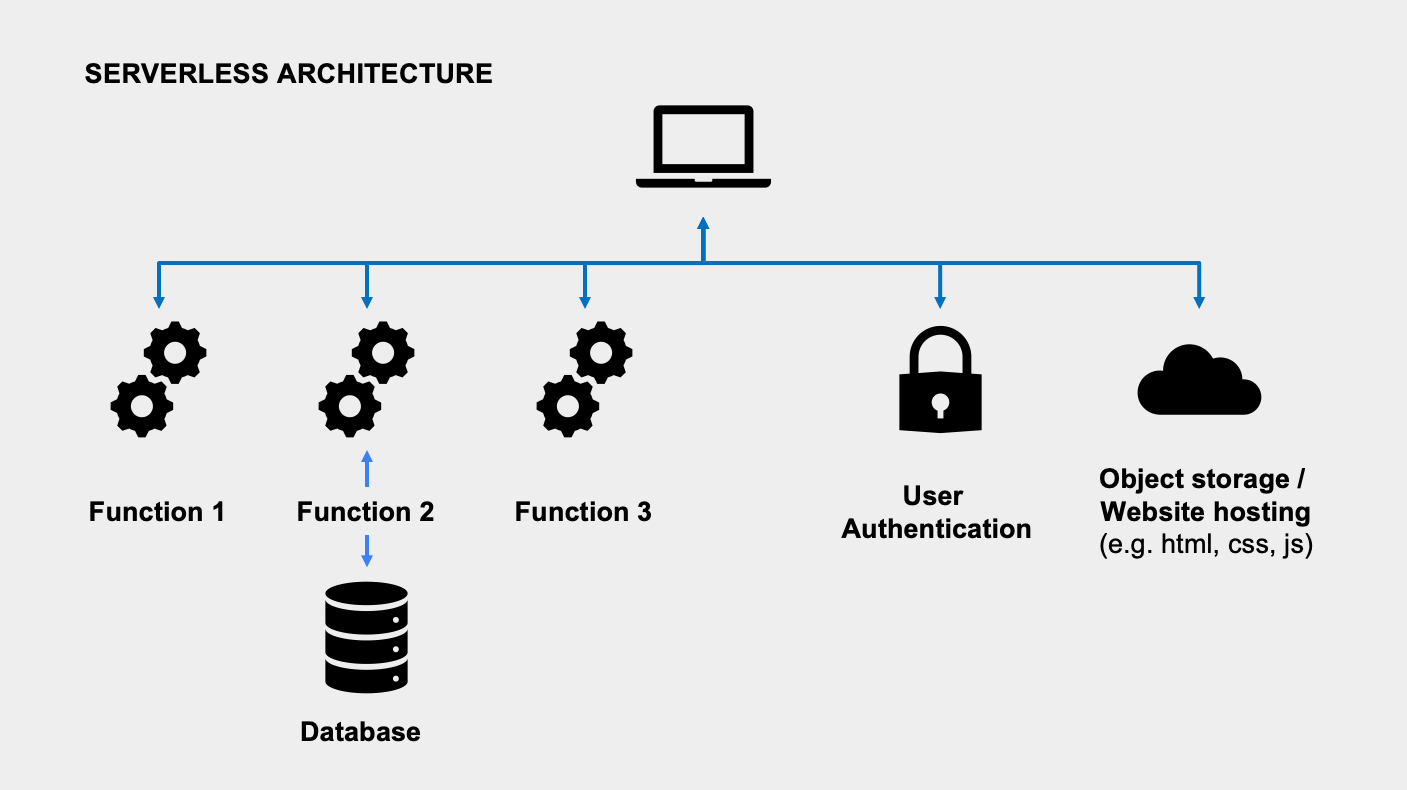Serverless Architecture: A good choice for your business?
The concept of serverless computing emerged in 2014 when AWS introduced lambda functions. This serverless approach offers concrete advantages, including cost efficiency, scalability, and faster time-to-market. Leading companies like Netflix, AirBnb and Coca-Cola have successfully demonstrated the efficacy of this architectural style due to its ability to abstract developers from server management and help them focus on delivering business value faster. This raises the architectural question: Is Serverless architecture a good choice for your business?
Just like with any technology, whether Serverless is beneficial or not depends on the specific use case. It comes with its own set of advantages and disadvantages that need to be considered.
What is Serverless Architecture?
The term “Serverless” can be confusing because it seems to imply the complete absence of physical servers. However, it signifies a shift in responsibility for developers. Unlike traditional server-based setups where developers are responsible for provisioning, managing, and scaling servers, Serverless relieves them of this task. The responsibility for server management is handed over to cloud providers, enabling developers to focus solely on coding their applications. So, it’s not about no servers, but about the freedom from server headaches.
Serverless has two perspectives
Function-as-a-Service (FaaS) — Function-as-a-Service (FaaS) is like having a personal assistant who performs specific tasks for you on demand. Imagine you have a list of chores, and instead of doing them yourself, you can simply ask your assistant to take care of each task separately. Each task is like a function, and your assistant executes them independently, without you having to worry about how they’re done or the details of the process. FaaS allows developers to write small, self-contained pieces of code (code-snippet) that can be triggered whenever needed, making it easier to build applications without having to manage the underlying infrastructure.
Backend-as-a-Service (BaaS) — Backend-as-a-Service (BaaS) is like having a fully equipped workshop that provides all the tools and materials you need to create something amazing. Imagine you have an idea for a project, and instead of starting from scratch and gathering all the necessary tools and materials, you can simply go to the workshop and use what’s already there. The workshop handles the complexities of managing the tools, equipment, and infrastructure, allowing you to focus on your project. BaaS provides pre-built backend services, such as user authentication, database storage, and push notifications, which can be easily integrated into your application without the need to build and maintain them from scratch.
In essence, FaaS enables you to execute small tasks on demand, while BaaS provides ready-made backend services that save you time and effort. Both FaaS and BaaS simplify the development process and allow developers to focus on their core tasks without getting bogged down by infrastructure or backend complexities.
A key difference between Microservices and Serverless
Microservice is able to run 24/7 whereas a serverless function is triggered, executed, and stopped once its job is done. This implies that the function will not consume more resources than needed.
The Pros and Cons of Serverless Architecture
Advantages
Cost — You only pay for the actual execution time of your code, making it an economical choice for sporadic workloads or applications with unpredictable traffic
Scalability — Serverless platforms automatically scale the resources based on demand, ensuring optimal performance and cost-efficiency
Time to Market — Serverless architectures abstract away the underlying infrastructure, allowing developers to focus solely on writing code without worrying about server management
Disadvantages
Limited Execution Capabilities: Serverless functions can have certain restrictions or limitations when it comes to execution: 1) Time limits, 2) Latency due to cold-start, 3) Memory usage, 4) deployment size, 5) number of concurrent function
Vendor Lock-in: Adopting serverless architectures may result in vendor lock-in, as each cloud provider has its own proprietary serverless platform
Debugging Complexity: Debugging and troubleshooting serverless applications can be more challenging due to the limited control and visibility into the underlying infrastructure
Multi-Tenancy: Multi-tenancy poses potential challenges in Serverless as tenants share the underlying infrastructure, which can lead to security and performance risks. For example, if one tenant’s function consumes excessive resources, it can affect the performance and availability of other tenants’ functions sharing the same resources
Potential Serverless Architecture Use Case
Serverless architecture is particularly effective when it comes to handling short-lived tasks and managing workloads that have irregular or unpredictable traffic patterns. Potential use cases include:
You need to process real-time data — If you need to process real-time data, Serverless architecture can be a good solution. For example, you can analyze streaming data from sensors, IoT devices, or social media feeds. Serverless functions can be triggered as new data arrives, enabling immediate processing and analysis. Examples include real-time sentiment analysis of social media feeds or monitoring server logs for anomalies
You need to run scheduled tasks and batch processing — Serverless architecture can be ideal for running scheduled tasks and performing batch processing. You can schedule functions to execute at specific times or intervals, automating tasks like generating reports, data backups, or data transformations. For instance, you can schedule a Serverless function to convert documents or generate updated reports for analysis
You do not need your service to run 24/7 — Serverless is advantageous when your service doesn’t need to run continuously 24/7. For example, if you have an application that only requires periodic or on-demand execution, such as a batch job that processes data once a day or a function triggered by user actions
Serverless isn’t a one-size-fits-all solution for every application, but it can bring advantages in specific use cases. The choice to adopt Serverless should be based on specific requirements, scalability needs, and capabilities of the organization.


